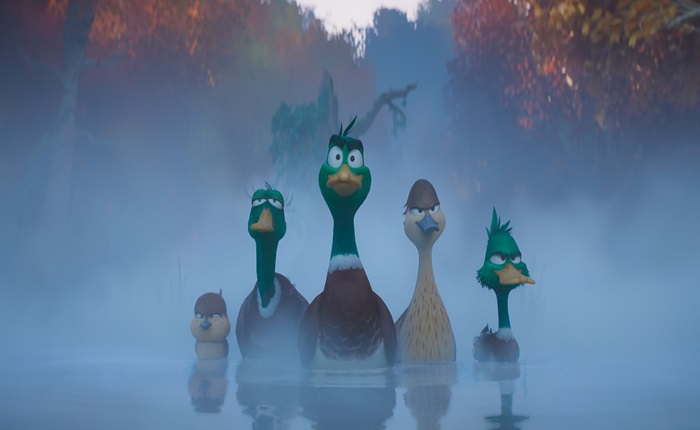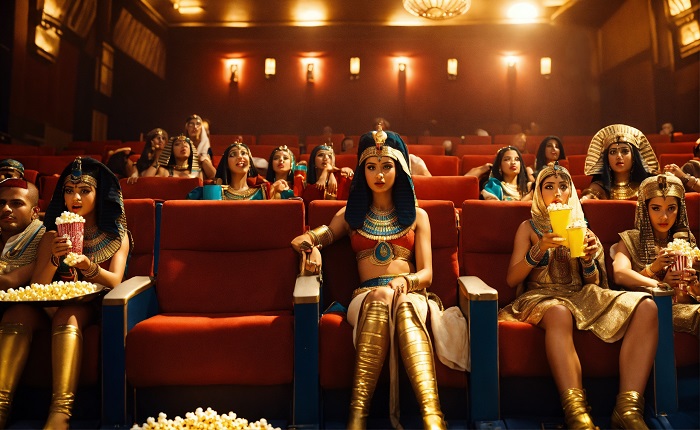Exploring Migration Movies: A Journey Through Cinema’s Reflection on Human Movement

Migration movies offer a unique lens into the stories of individuals or groups who leave their homeland for a new life elsewhere. Whether it’s driven by war, economic hardship, or the quest for a better life, migration is a recurring theme in cinema. These films capture the emotional, psychological, and cultural aspects of migration, allowing audiences to empathize with the challenges and triumphs of those who embark on these life-altering journeys. From historical epics to contemporary dramas, migration movies tell stories that resonate deeply with global audiences.
The Evolution of Migration Movies
Migration movies have evolved over time, mirroring the shifts in society’s attitudes toward migration. Early cinema focused on immigration as a hopeful pursuit of the American Dream, while more recent films have tackled the complexities of identity, belonging, and displacement. Migration movies reflect changing global trends and the politics of borders, often critiquing the way nations handle the influx of migrants.
Themes in Migration Movies
At their core, migration movies are about movement, both physical and emotional. Themes such as exile, home, displacement, and identity are central to these films. Migration movies explore how individuals cope with the loss of home and adapt to new environments. They often highlight the cultural clashes, language barriers, and the emotional toll of leaving behind loved ones. These movies also address the political implications of migration, such as border control, asylum policies, and human rights issues.
Iconic Migration Movies in Cinema History
Some migration movies have become iconic, leaving a lasting impact on audiences and film history. Movies like The Godfather Part II, which explores the immigrant experience in America, and The Grapes of Wrath, which focuses on internal migration during the Great Depression, are prime examples. More recent migration movies such as The Kite Runner and Brooklyn continue to resonate with audiences by highlighting personal and cultural struggles during migration journeys.
Migration Movies Depicting the Refugee Crisis
In recent years, migration movies have increasingly focused on the global refugee crisis. Films like The Good Lie and The Crossing portray the harrowing experiences of refugees fleeing war-torn countries. These migration movies bring to light the dangerous journeys people undertake in search of safety and the challenges they face in refugee camps and resettlement programs. By humanizing the refugee experience, migration movies foster empathy and understanding among viewers.
The Role of Family in Migration Movies
One of the central themes in migration movies is the role of family. Families are often separated by migration, leading to emotional narratives about reunification or the struggles of maintaining connections across borders. Migration movies such as Lions and In America show how family dynamics change during migration, and how the hope of building a better future for loved ones drives many to leave their home countries.
The Search for Identity in Migration Movies
Identity is a complex issue explored in many migration movies. Migrants often grapple with a sense of belonging in their new countries, facing cultural identity crises. Migration movies like The Namesake and My Name is Khan delve into the challenges of balancing old cultural ties with the new identities forged in foreign lands. These films highlight the tension between assimilation and preserving one’s heritage, a common struggle for migrants.
How Migration Movies Represent Cultural Integration
Migration movies often show the difficult process of cultural integration. Characters in these films must learn new languages, adapt to different customs, and face prejudice in their new environments. Movies like West Side Story and The Visitor showcase how cultural integration can lead to both conflict and connection. These migration movies emphasize the resilience and adaptability of migrants as they navigate new social landscapes.
The Emotional Toll of Migration in Film
Migration movies often depict the emotional toll that migration takes on individuals. Leaving one’s homeland is a deeply emotional experience, fraught with loss and uncertainty. Films like Away We Go and Sin Nombre portray the psychological struggles migrants face, including homesickness, loneliness, and the fear of the unknown. Migration movies serve as powerful narratives of personal growth, resilience, and the human capacity for hope in the face of adversity.
Migration Movies and Globalization
Globalization has led to an increase in migration worldwide, and migration movies reflect this trend. As people move across borders for work, education, or to escape conflict, these films portray the interconnectedness of global societies. Migration movies like The Terminal and Babel highlight how migration shapes global economies, cultures, and political landscapes. These films offer insights into how migration influences not just individuals but also entire nations.
Migration Movies as Social Commentary
Many migration movies serve as a form of social commentary, critiquing the treatment of migrants and refugees in different countries. Films like A Better Life and Amreeka raise important questions about immigration policies, social justice, and human rights. Migration movies have the power to spark conversations about the ethics of borders, the challenges of integration, and the moral responsibility of host countries to support migrants.
Representation of Women in Migration Movies
Migration movies often highlight the unique challenges faced by women during migration. Women in these films may face gender-based violence, exploitation, and the added burden of caring for children during their journeys. Migration movies like Desert Flower and The Joy Luck Club depict the resilience of women as they navigate the complexities of migration, often overcoming both personal and societal obstacles in the process.
The Future of Migration Movies
As migration continues to be a global issue, migration movies will likely remain a relevant and powerful genre. With advancements in technology and the increasing accessibility of global media, future migration movies may offer even more diverse perspectives on the migration experience. These films will continue to challenge audiences to rethink their views on migration, borders, and cultural identity, making migration movies an essential part of the cinematic landscape.
Conclusion
Migration movies have long served as a powerful medium for telling the stories of those who leave their homes in search of new beginnings. These films provide a window into the emotional, cultural, and political aspects of migration, offering audiences a deeper understanding of the challenges faced by migrants. As globalization increases and migration remains a key issue worldwide, migration movies will continue to shape public perceptions of migrants and refugees. By fostering empathy and highlighting the shared humanity of migrants, these films encourage viewers to reflect on their own attitudes toward migration and cultural integration.
FAQs
1. What are migration movies?
Migration movies are films that depict the experiences of individuals or groups who move from one country or region to another. These films explore themes like displacement, identity, cultural integration, and the emotional impact of migration.
2. Why are migration movies important?
Migration movies are important because they offer a glimpse into the challenges and triumphs of migration, fostering empathy and understanding. They also serve as social commentary, critiquing immigration policies and highlighting the human rights issues faced by migrants and refugees.
3. Can migration movies influence public opinion?
Yes, migration movies have the power to influence public opinion by humanizing migrants and shedding light on the complexities of migration. Through compelling storytelling, these films can change perceptions and spark important conversations about immigration and global movement.
4. What are some examples of famous migration movies?
Some famous migration movies include The Godfather Part II, Brooklyn, The Kite Runner, The Grapes of Wrath, and Sin Nombre. These films explore different aspects of the migrant experience, from family dynamics to cultural integration.
5. How do migration movies address cultural identity?
Migration movies often explore the tension between preserving one’s cultural heritage and adapting to a new environment. Characters in these films grapple with questions of identity, belonging, and the challenges of balancing their old and new lives.





